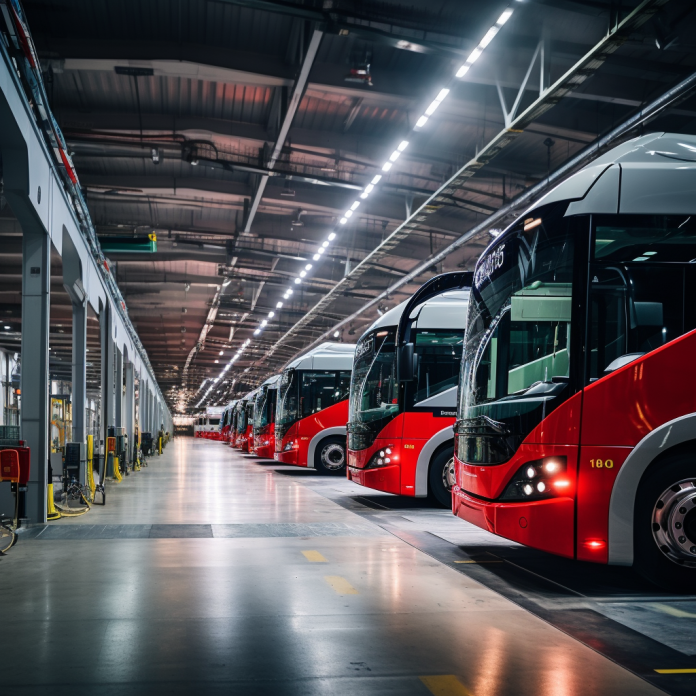Mike Nakrani, CEO of VEV, explains how to meet the challenges of transitioning local authority fleets from diesel to electric
Local authorities impact more than 80% of carbon emissions produced in their area, which explains the decision by 300 English councils to declare a climate emergency.
UK fleet emissions make up 10% of the country’s total carbon emissions, and transport accounts for up to 20% of scope 3 emissions (CDP research)
The role that fleets play in emissions reduction cannot be overstated, and fleet electrification is how fleets are adapting to meet decarbonisation targets. The switch to EVs significantly improves air quality and community wellbeing, as well as reducing noise pollution.
In the context of the UK’s net zero mission, fleet electrification is high on the agenda for local authorities, with services operating a wide range of vehicles, including vans, buses and refuse collection vehicles (RCVs).
Bus fleets are leading the way in fleet electrification
The critical role bus fleets play has unlocked Government funding, including the ZEBRA scheme. ZEBRA has offered hundreds of millions in funding – with £270 million allocated to 16 councils in the first phase. In March 2024, the UK government unlocked a further £143 million to help roll out 955 new zero-emission buses in England.
Whether a Local Authority takes ownership of the buses it operates or has an agreement with a bus operator will determine if the fleet falls under the Greenhouse Gas Protocol scope 1 or scope 3 emissions. But the need to reduce the fleet emissions remains the same.
Case study: Kent County Council electrifies Thameside BRT (bus rapid transit) for 2.75 million passengers using state-of-the-art opportunity charging
Kent County Council declared a climate emergency in May 2019 and pledged to be net zero from its own activities by 2030. The Council is investing in projects addressing the national climate emergency.
Running on dedicated BRT lanes since 2006, the Fastrack Bus Rapid Transit is going electric with £9.5 million ZEBRA 1 funding. From November 2024 to April 2025, a fleet of 28 clean-energy, fully electric buses will replace the existing diesel-powered vehicles on the route covering Dartford and Gravesham.
The electrification involves 28 e-Tram buses manufactured by Irizar and operated by Go-Ahead. Kent County Council appointed VEV to install and develop the charging infrastructure. In total, the project is predicted to achieve emissions savings of 1,100 tonnes per year.
The Council is using specialist opportunity charging infrastructure in the shape of six powerful pantograph chargers. This technology means the buses can charge while they’re on a route rather than having to return to a depot. There are only ten operating in the UK today. At 450kW, it takes less than six minutes to top-up charge at each end of the route while passengers board.
Case Study: Tootbus London operates green sight-seeing electric buses (video walkaround)
A private company impacting carbon emissions in central London, Tootbus has been investing in its green strategy since 2021 when it converted to HVO fuel, which reduces CO2 emissions by 90%.
Moving to the next phase with electric vehicles (EVs), Tootbus appointed VEV to develop the overall fleet electrification plan.
The project involves charging infrastructure, 100% renewable power supply, solar power generation and smart energy management.
The solar panels at the Tootbus Wandsworth depot should generate 65,000 kWh to power 60,000km of bus travel, and reduce the load drawn from the National Grid. This is enough for one bus for an entire year to run on sunlight.
Refuse collection vehicles (RCVs) are earlier in development than electric buses
RCVs are classified as HGVs and can emit up to 600g CO2 per kilometre when fully laden. They are arguably among the largest carbon emitters in councils’, or their contractors’, vehicle fleets – making them priority candidates for electrification and a key focus for change to be successful in meeting carbon reduction targets by 2030.
Electrifying recycling and refuse collection allows local councils to significantly reduce carbon emissions and noise pollution simultaneously.
Case Study: Serco waste collection pilot in Hampshire to prove the business case and feasibility for eRCVs
Supporting the climate emergency targets of three Hampshire Councils, Serco is working with VEV and refuse vehicle solution provider RVS, to reduce the carbon footprint of recycling and refuse collection by demonstrating the capabilities of electrically powered collection vehicles (eRCVs).
RVS refurbished and repowered two diesel RCVs into as-new electric vehicles. This process results in a lower manufacturing carbon footprint compared to building a new EV from scratch while also removing a diesel vehicle from the fleet.
The project builds on the initial electrification feasibility assessment conducted by VEV. We supplied and installed charging infrastructure, along with our management platform, VEV-IQ, to track vehicle routes, charging schedules, power usage, and carbon savings.
The pilot will demonstrate the significant emissions- and noise-reducing benefits of EV waste collection, along with the operational benefits of eRCVs, and establish the business case for Serco to electrify its refuse collection fleets. The findings are due for publication in Summer 2024.
Fleets are one capital cycle away from zero-emission deadlines
With a typical lifespan of seven years, there’s just one capital cycle remaining for fleet vehicles before deadlines start to hit. Procurement decisions need to change in the very short term.
The challenges councils face in delivering significant emissions reductions are substantial, and 93% of councils surveyed by the Local Government Association in 2023 stated a lack of funding or finance options as the most impactful blocker. 21% also cited a lack of data as a barrier to addressing climate impacts.
The economics stack up for electric fleets now. Mile for mile, £ for £, EVs deliver better energy efficiency despite the recent disconnect between electricity and diesel prices caused by geo-political events.
The necessary expertise is typically not available in-house and needs to be brought in at an early stage to achieve a successful electrification transformation.

This work is licensed under Creative Commons Attribution-NonCommercial-NoDerivatives 4.0 International.











